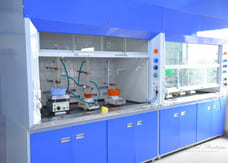


A metabolite is the intermediate end product of metabolism. The term metabolite is usually restricted to small molecules. A drug metabolite is a byproduct of break down, or “metabolizing,” a drug into a different substance.
A metabolite is the intermediate end product of metabolism. The term metabolite is usually restricted to small molecules. A drug metabolite is a byproduct of break down, or “metabolizing,” a drug into a different substance.
Estimation of Drug metabolites in the blood is an essential part to understand the distribution of drug in the blood. High purity, well characterized drug metabolite standards are required for Bio-Analytical BE/BA Studies.
Some metabolites stay in the body much longer than the parent drug. When that is the case, a drug test has a higher probability of identifying a drug user by looking for the metabolites of the drug, rather than the parent drug.
They are usually restricted to small molecule. They can be